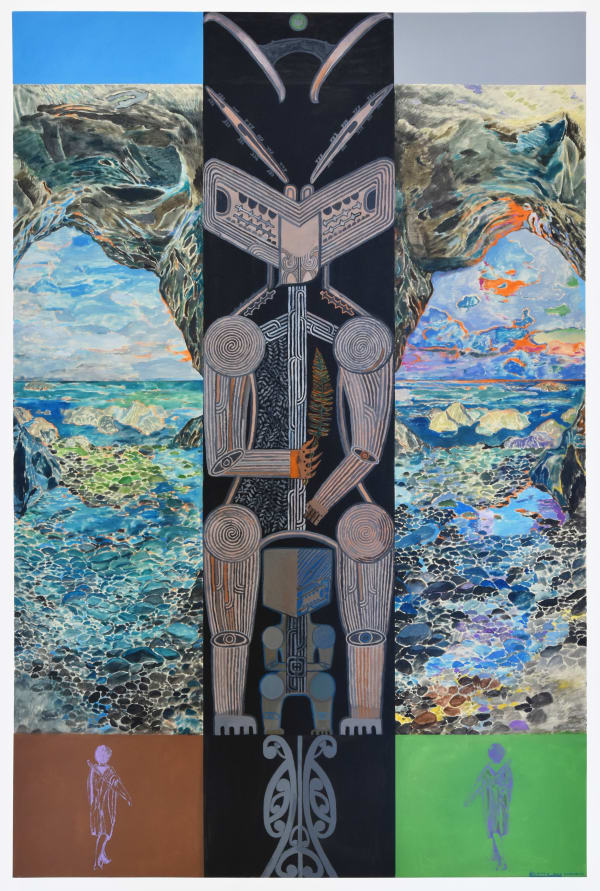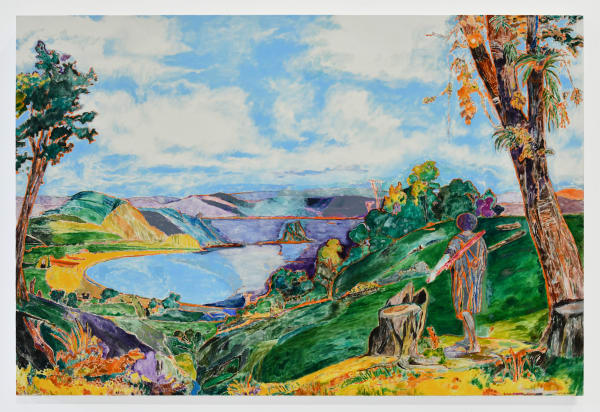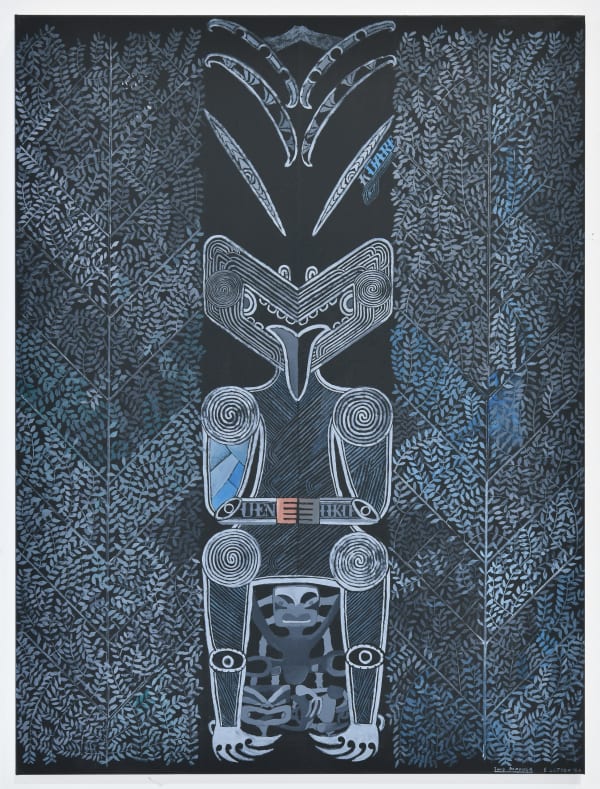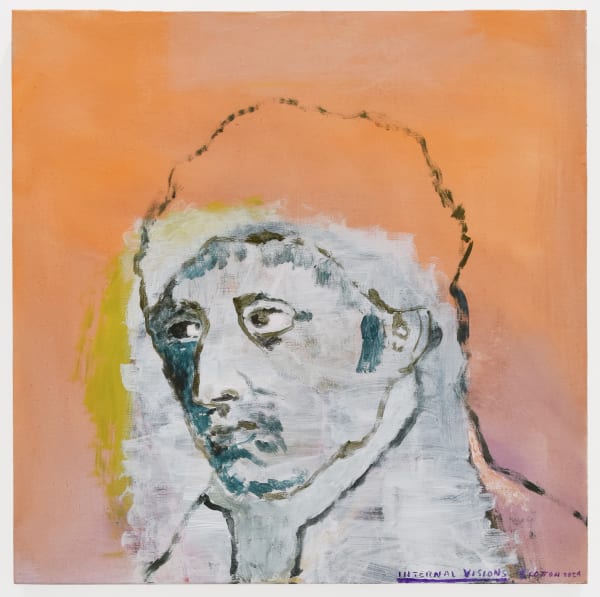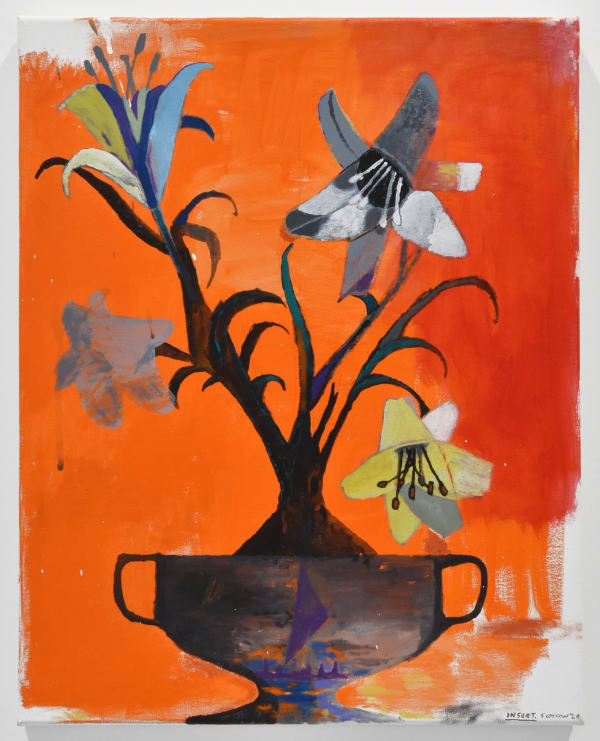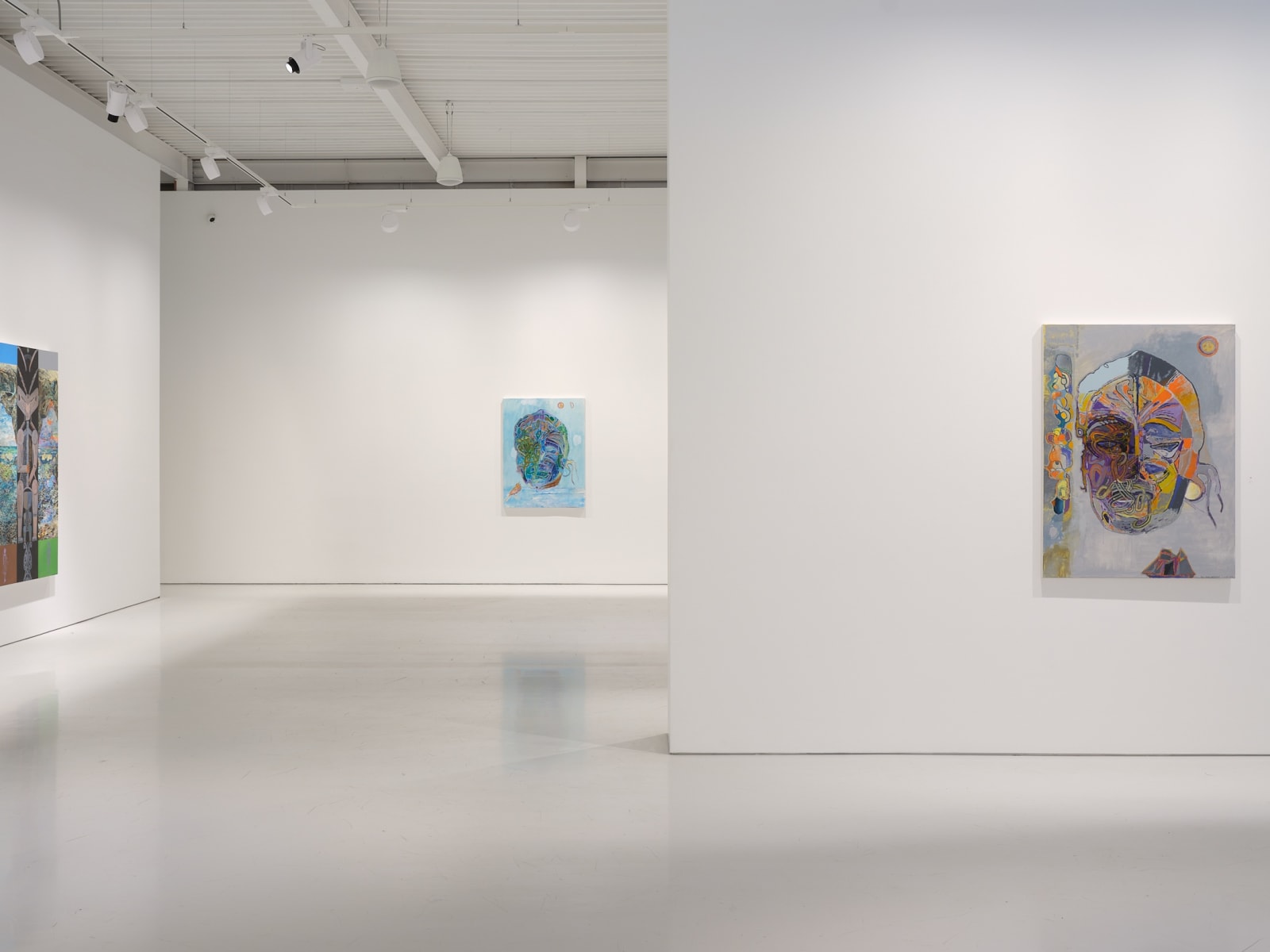-
-
 Shane Cotton, Ahuaiti's Cave, 2024
Shane Cotton, Ahuaiti's Cave, 2024 -
 Shane Cotton, Ka moe au, i te moemoea…, 2024NZD 130,000.00
Shane Cotton, Ka moe au, i te moemoea…, 2024NZD 130,000.00 -
 Shane Cotton, Te Pokapūtanga, 2024
Shane Cotton, Te Pokapūtanga, 2024 -
 Shane Cotton, The First Prophet, 2024NZD 130,000.00
Shane Cotton, The First Prophet, 2024NZD 130,000.00
-
 Shane Cotton, Up the Creek, 2024
Shane Cotton, Up the Creek, 2024 -
 Shane Cotton, Super Radiance, 2024NZD 90,000.00
Shane Cotton, Super Radiance, 2024NZD 90,000.00 -
 Shane Cotton, Sunset Gate, 2024NZD 48,000.00
Shane Cotton, Sunset Gate, 2024NZD 48,000.00 -
 Shane Cotton, Rahiri's Light, 2024
Shane Cotton, Rahiri's Light, 2024
-
 Shane Cotton, The Will of the Devil, 2024
Shane Cotton, The Will of the Devil, 2024 -
 Shane Cotton, Two Maunga, 2024
Shane Cotton, Two Maunga, 2024 -
 Shane Cotton, Water's Edge, 2024
Shane Cotton, Water's Edge, 2024 -
 Shane Cotton, Slow Sun Abstraction, 2024
Shane Cotton, Slow Sun Abstraction, 2024
-
 Shane Cotton, Slow Sun Abstraction I, 2024NZD 55,000.00
Shane Cotton, Slow Sun Abstraction I, 2024NZD 55,000.00 -
 Shane Cotton, Slow Sun Abstraction II, 2024
Shane Cotton, Slow Sun Abstraction II, 2024 -
 Shane Cotton, The Great Attractors, 2024
Shane Cotton, The Great Attractors, 2024 -
 Shane Cotton, He tangata hīkoi, 2024
Shane Cotton, He tangata hīkoi, 2024
-
-

SHANE COTTON
Super Radiance
Essay by Anthony ByrtIn his recent autofiction Question 7, the Tasmanian writer Richard Flanagan draws a line from HG Wells—the father of the alien invasion narrative—to the dropping of two atomic bombs on Japan. Wells had been the first to speculate, albeit fictionally, on the idea of a nuclear chain reaction. The Hungarian-born physicist Leo Szilard then patented the idea in 1936, which set in train a process that led to the Manhattan Project. Flanagan also draws attention to the well-known fact that Wells’s The War of the Worlds was partly inspired by the systematic and near-total genocide of the Tasmanian Aboriginal people. Two annihilations, then, linked by the dreams of a science-fiction pioneer: one in Japan, in which an Empire that had been brutalising populations throughout Asia and the Pacific had its ambitions extinguished by two vast and radiant fireballs; and one near the bottom of the world, where the British Empire cleared an island, through murder and disease, so it could export its own convicts and set them loose in a kind of bandit-agrarian experiment. When the bombs were dropped, Flanagan’s father was an Australian POW in Japan: but for Hiroshima and Nagasaki, he would likely never have survived the war, and his author-son would never have been born.
Our histories unfold as a series of unpredictable futures; time is an uneasy sleep, and each new dream is like an accordion fold, with our ancestors and soon-to-be stories changing during each expansion and contraction. For thirty years, Shane Cotton’s paintings have explored the spaces between these folds, warping and bending time, memory, and the natural world. The elastic extremity of his manipulations has, for the most part, been located in the explosive force of colonial collision: the period at the start of the nineteenth century during which two powerful cultures smashed into each other, initiating a chain reaction that opened up new ways of experiencing and visualising the world. At the heart of Cotton’s twisted universe are two opposing conceptions of time: for one, events move in a single direction; for the other, embodied in the concept of whakapapa, time operates as a constellation, a series of points—living, located in the land, or existing in a deep and strange ur-space—that determine our existence in the present. This constellated reality opens up gaps between states: everything is always on the way to being something else, and the transition is usually marked by a protocol or an ancestor story, an idea, a metaphor, or an image.
Cotton’s latest body of work seeks new ways of actualising these threshold moments of fluidity and transformation, using his own whakapapa—the whakapapa of the North—as his raw material. Ngāpuhi trace their presence in Aotearoa back to Nukutawhiti, the leader who travelled here in his grandfather Kupe’s waka, which had been re-adzed for its second long journey south. Nukutawhiti’s daughter Moerewa (her name can be translated as “liquid sleep”) didn’t want to make the trip, so to cope with the long voyage, she put herself into a deep slumber, and became one with the water. In other versions of the story, Moerewa becomes a taniwha, swimming alongside the waka until it reaches Aotearoa. Cotton, in one of this exhibition’s centrepiece paintings, presents Moerewa in her taniwha form, a serpentine body twisting through a black abyss with a cosmic wake trailing her—pocks of light that are both stars and air bubbles, produced by her velocity. The black space she is crammed inside is flanked by two equally narrow landscapes, each a mirror of the other, with subtropical grasses, and palm trees whose trunks twist like her body. The space just beyond the plants is arranged in acidic technicolour strata: layers of rock doubling as lines of light, a primordial landscape as unreal as the abyss Moerewa swims through.
Cotton places other Ngāpuhi ancestors in similarly alien settings, including Ahuaiti, the first wife of Rāhiri, who he presents in tiki form, squeezed between a mirrored coastal seascape. Ahuaiti’s story is one of isolation and strength: when Rāhiri returned home to find that she had fed the best fern root to guests and not saved any for him, he threw her out. Pregnant when exiled, Ahuaiti raised their son Uenuku alone in a cave on the coast, then sent him back to his father to claim his rightful legacy. As with Moerewa, the landscape around Ahuaiti seems more dream-pattern than place, the doubled opening through rock flaring out from her like a pair of wings. Between her legs is the smaller form of her son Uenuku Kuare, who, in another painting, grows up and occupies his own surreal space: a doubled landscape that is itself a ghost of a pre-Tiriti painting—the crossed cabbage tree and young tōtara taken directly from Augustus Earle’s 1820s view of Kororāreka, in the Bay of Islands.
Cotton also appropriates Earle at the bottom of the Ahuaiti work. Inside two coloured boxes are the doubled silhouettes of a Māori guide, lifted directly from Earle’s A Distant View of the Bay of Islands, 1827-28. Earle was working in Te Tai Tokerau at the peak of Hongi Hika’s power, at the tail end of the Musket Wars. During that period, the Bay of Islands—and Kororāreka specifically (where Cotton now lives)—was the energetic nucleus driving Aotearoa’s transformation. Hongi was at the heart of it, having increased his power vastly through his acquisition of muskets, largely thanks to his close relationship with Aotearoa’s first missionary, Thomas Kendall. In a small painting titled The Visitation, Cotton presents Kendall as he was portrayed by artist James Barry during his return trip to England in 1820, with Hongi and the young Northern rangatira Waikato. In Hongi’s and Waikato’s place, Cotton has instead suspended a hovering “visitor”: a multicoloured alien-manaia that also has the outline of an erect penis (a common prominence in the carved portrayals of ancestors). Kendall was an Evangelical and a reformed sinner, whose previous appetites were never fully divulged (though he did end up having an affair with the seventeen-year-old daughter of a Ngāpuhi tohunga), here to save South Seas heathens from Satan’s clutches. But through his connection with Hongi, he was thoroughly shaken in his Christian faith, encountering a worldview that, to him, often seemed more sublime than the one he had arrived here to spread—a Temptation he could only process as the work of the Devil he’d come to counter.
Cotton has created a world of Northern visitations, arrivals, exiles and invasions: Te Tai Tokerau’s whakapapa as a metaphorical vortex that spirals through multiple conflicts, loves and sexual complexities—because a fern root isn’t always just a fern root, and a cave is a dark abyss to be entered. Inside that spinning energy, ancestors transform too: into tiki, taniwha, manaia. We don’t really know what the origins of these hybrid human forms are, or where they came from. And yet we accept it as given that this is how an ancestor is portrayed, particularly in carving. We also accept that Moerewa turned herself into water as she left Hawaiki, then reformed once she got here. We accept that Kupe chased a giant wheke (octopus) here, its fat orb body spilling its tendrils across the surface of the Pacific, guiding him from Hawaiki to Hokianga Harbour. We accept that the harbour’s entrance is guarded by taniwha who travelled with Nukutawhiti, and that his re-adzed waka hourua is hidden in a cave there, now turned to stone. We accept that the land of Te Tai Tokerau is the tail of a great fish, and its name, Te Ika a Maui, is also given to the Milky Way, which sits like a stain of light directly above the North Island—a luminous sky-fish that led the first navigators here.
Cotton has often been called a history painter, but these works pose a different representational question: if time doesn’t exist as a line, then where does history actually exist? HG Wells played with a similar question in his work, using Britain’s nineteenth century colonial crimes as a framework to imagine a future in which Europeans themselves might be given a taste of their own imperial medicine. Ever since, science fiction has had a schizophrenic relationship with colonialism: an oscillation between invader and invaded. In Denis Villeneuve’s 2016 film Arrival, for example, the alien “invaders” are in fact here to offer humanity an extraordinary gift—their language, which enables those who master it to see the future. And in Villeneuve’s recent Dune films, an Indigenous culture launches a guerilla-style resistance against an invading imperial force intent on extracting their planet’s valuable natural resources.
The new technicolour trippiness of Cotton’s work also brings to mind Alex Garland’s 2018 film Annihilation, in which an organic entity, in the form of a shimmer that refracts light, crashes to Earth and envelops a lighthouse bordering near-empty swampland. While several human missions have crossed into it, seeking to understand what it’s doing here and what’s happening inside it, only one survivor has ever managed to come out: a soldier named Kane, presumed dead, who suddenly re-emerges at his home without any knowledge of how he got there. Kane’s biologist wife Lena, played by Natalie Portman, volunteers to go into the shimmer as part of an expedition of women led by a Kurtz-like figure, hellbent on reaching the lighthouse. As soon as they enter, an unspecified period of time disappears, and they come around again in a swamp-tropical blaze: lush and colourful, with an acid-trip translucency. As they press deeper into the shimmer, the group gradually realises that it is not only refracting light, but also the DNA of all living things inside it. Inside the shimmer’s ground zero—the lighthouse—Lena inadvertently gives cellular birth to her own mirror double: a reflection she must destroy if, like her damaged husband, she is to escape the shimmer world.
There are hacked hybridities and doubles everywhere in Cotton’s new work too: a place where living forms merge with each other, time bends and artistic information is jumbled. This is apparent not just in the ancestor paintings, but in his latest treatment of Upoko Tuhituhi: the marked and preserved heads that have been such a feature of his work for the past twenty years. Cotton has given them many different roles over that time: they have been silhouettes, likenesses, cosmic beings, floating alien entities. Here, he positions them as portals. Inside them, a spaghetti-string abstraction mixes with traces of the original moko; a space where free gesture meets highly-patterned order in vivid, near-screaming colour. Some of the head-portals sit solidly on the horizon line, like visiting ships or setting suns. They are evolutions of an old artform finding homes in a shimmer world ablaze with Northern light; as much hybrid, living beings as the Ngāpuhi ancestors, and possessed with immense force—the ability to smash images together, bend them, and compress them into something new.
Richard Flanagan wrestled in his account of his Tasmanian family history with the knowledge that he comes from a place where people have lived for 40,000 years. During the vast majority of that habitation, time was never considered a march in a singular direction. He also grappled with its spliced DNA histories, awash in blood and crime and death. Wells, on the other hand, in truly racist form, saw the near-erasure of that history as the inevitable march of modernity, and used it as a platform to imagine alien futures. Cotton’s new work is also positioned in the spaces opened up by the collision of Indigenous and European time systems. The great conundrum of this collision in Aotearoa is the way it has opened up a scrambled universe, with Te Tai Tokerau as its originary dream-place: from the moment Kupe entered the Hokianga, to the epic reshapings unleashed by Hongi and Kendall, through Te Tiriti, and circling all the way back through the tūpuna and stories that Cotton brings into being here. The North—now, then, always—is a world shaped by colossal and radiant explosions.
Shane Cotton: New Painting
Past viewing_room
Shane Cotton's New Painting delves into the collision of Indigenous and European time systems, warping time, memory, and nature through the lens of his Ngāpuhi whakapapa. His new works place ancestral figures in surreal, cosmic landscapes, exploring hybridities, transformation, and the cyclical nature of history. Cotton’s paintings blend history, mythology, and technicolour imagery, reflecting on the layered, nonlinear relationship between the past, present, and future in Aotearoa.

